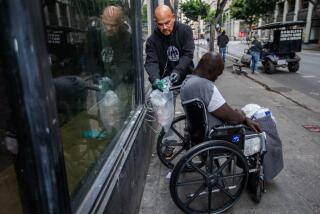Oxygenator Patient Dies 5 Days After Implant
SALT LAKE CITY â The first human patient to use an experimental lung-assisting device, a teen-ager suffering from severe respiratory stress, died Wednesday, five days after the bundle of fine tubing was implanted in her chest.
Melicia Harvey, 16, of Arthur City, Tex., died of âworsening pulmonary failure,â Tim Madden of LDS Hospital said.
The experimental IntraVascular Oxygenator, implanted during a two-hour operation Friday, functioned properly until the girlâs death, Madden said. He added that the hospitalâs government-approved program of implantation surgery will be continued.
âThere were no clinical complications from the use of the device, which added oxygen to and removed carbon dioxide from the patientâs blood,â Madden said.
Harveyâs name and details of her condition were withheld at her familyâs request until a Texas newspaper, the Paris News, identified her and her father, Atrell Harvey II. Madden confirmed her identity Wednesday with the familyâs permission.
The IVOX, a 20-inch bundle of hundreds of gas-permeable tubes, each about the thickness of a human hair, was designed to give damaged lungs time to rest and recover. It is inserted via the neck or groin into the inferior vena cava, the large vein that brings blood to the heart.
Two tubes, each the diameter of a soda straw, lead out of the body from the main bundle of tubes. One delivers oxygen to the blood; the other vents carbon dioxide.
The IVOX was approved by the Food and Drug Administration in September for temporary use in not more than 10 patients at LDS and three other medical centers, including the Los Angeles County-University of Southern California Medical Center.
Madden said that in its most severe forms, adult respiratory distress syndrome causes death in 90% to 95% of all cases. It has a variety of causes and is characterized by an inability of the lung to transfer oxygen to the blood.
Before Harvey died, it was unclear how long doctors would leave the device implanted.






